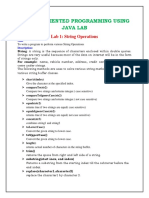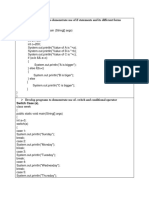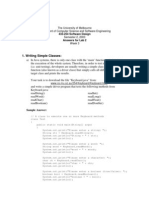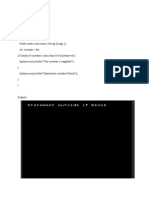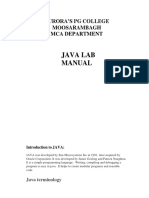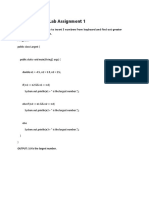0% found this document useful (0 votes)
335 views33 pages1151CS302 - Java Programming Lab
The document outlines the list of experiments for a Java programming laboratory course. It includes 9 experiments covering basic Java concepts like classes and objects, constructors, inheritance, packages, interfaces, threading, exception handling, AWT, and JDBC. The experiments provide step-by-step procedures to implement the concepts. Learning resources section lists reference books and online resources for further reading. An index section lists the experiment numbers and names for quick reference.
Uploaded by
hemalathaCopyright
© © All Rights Reserved
We take content rights seriously. If you suspect this is your content, claim it here.
Available Formats
Download as DOCX, PDF, TXT or read online on Scribd
0% found this document useful (0 votes)
335 views33 pages1151CS302 - Java Programming Lab
The document outlines the list of experiments for a Java programming laboratory course. It includes 9 experiments covering basic Java concepts like classes and objects, constructors, inheritance, packages, interfaces, threading, exception handling, AWT, and JDBC. The experiments provide step-by-step procedures to implement the concepts. Learning resources section lists reference books and online resources for further reading. An index section lists the experiment numbers and names for quick reference.
Uploaded by
hemalathaCopyright
© © All Rights Reserved
We take content rights seriously. If you suspect this is your content, claim it here.
Available Formats
Download as DOCX, PDF, TXT or read online on Scribd
/ 33






